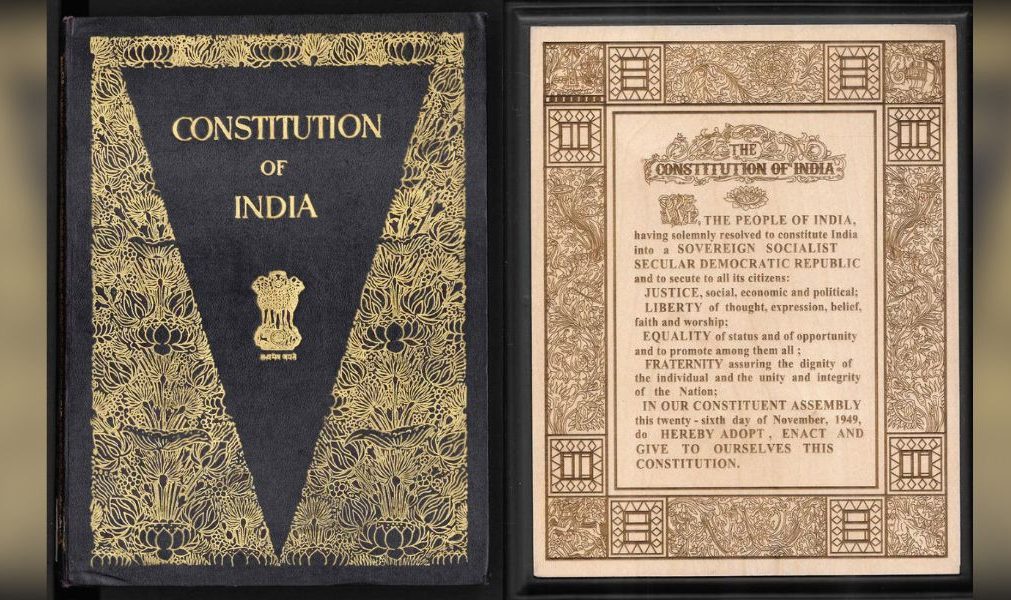Constitutional Amendment for Republic of Bharat: A Herculean Task (Part 3)
Introduction
In the first part of this series, we examined the legal and diplomatic implications of renaming India as ” Republic of Bharat,” particularly in the context of international recognition and treaties. Part 2 delved deeper into the cultural and historical dimensions, exploring the etymology of “Bharat” and its significance in the Indian cultural and historical narrative. Building on these discussions, Part 3 will shift focus to the legal mechanisms available for effecting such a monumental change. Specifically, this article will provide a comprehensive overview of the constitutional amendment process as outlined in Article 368 of the Constitution of India, 1950. We will discuss the procedural steps, legal requirements, and potential challenges involved in amending the Constitution to rename India as Republic of Bharat.

By examining the legal pathways, this installment aims to offer a nuanced understanding of the complexities involved in altering the name of the country, thereby providing a well-rounded perspective on this multifaceted issue.
The Detailed Process of Constitutional Amendment to Rename India as Republic of Bharat
Having explored the cultural and historical dimensions of the name “Bharat” in Article 2, we now turn our attention to the legal mechanisms available for effecting such a change. This article focuses on the constitutional amendment process, as outlined in Article 368 of the Constitution of India, 1950. The debate over renaming India as “Bharat” has garnered significant attention, especially in the wake of the G20 summit invitation controversy. This article aims to provide a detailed guide on the constitutional amendment process required to change the name of the country as per Article 1 of the Constitution of India, 1950. The process is governed by Article 368 of the Constitution.
International Precedents
There are several instances where countries have changed their names through constitutional or legislative means. Here are some examples:
| Region | Original Name | New Name | Year | Additional Information |
|---|---|---|---|---|
| African Nations | Swaziland | Eswatini | 2018 | King Mswati III announced the change to mark the 50th anniversary of independence. |
| Asian Nations | Burma | Myanmar | 1989 | The ruling military junta changed the name; however, the change is still a matter of international debate. |
| Asian Nations | Ceylon | Sri Lanka | 1972 | Changed its name and adopted a new constitution. |
| European Nations | Czech Republic | Czechia | 2016 | Officially adopted “Czechia” as its shorter, informal name; the formal name remains unchanged. |
| Multiple Name Changes | Zaire | Democratic Republic of Congo | 1997 | Known as Zaire from 1971 until 1997; reverted to its original name. |
| Historical Examples | East Pakistan | Bangladesh | 1971 | Became Bangladesh following its independence from Pakistan. |
| Historical Examples | Persia | Iran | 1935 | The government requested the country be called Iran, meaning “Land of the Aryans,” instead of Persia. |
Step-by-Step Guide to Constitutional Amendment to give effect to Renaming Republic of India as Republic of Bharat
| Step | Description |
|---|---|
| 1. Initiation of the Bill | A Bill proposing the amendment must be introduced in either the Lok Sabha or the Rajya Sabha. Either a Member of Parliament or a Minister can initiate. |
| 2. Majority Requirement in Each House | The Bill must secure the approval of a majority of the total membership of each House and a two-thirds majority of the members present and voting. |
| 3. Special Majority Requirement | Given that Article 1 pertains to the Union and its territory, the amendment would likely necessitate ratification by not less than one-half of the State Legislatures, as stipulated in Article 368(2)(a) of the Constitution of India. |
| 4. Presidential Assent | Upon being passed by both Houses of Parliament and receiving the required State ratifications, the Bill is presented to the President for assent. |
| 5. Publication in the Official Gazette | After Presidential assent, the amendment is published in the Official Gazette and becomes an integral part of the Constitution. |
| 6. Legal Challenges | The amendment could be subject to judicial review by the Supreme Court of India to ascertain its constitutionality. |
| 7. Implementation | Post any legal challenges, the amendment would be implemented, officially changing the name “India” to “Bharat” in Article 1 of the Constitution. |
Challenges and Criticisms
The process of constitutional amendment is fraught with challenges. These range from political hurdles, given the need for a two-thirds majority, to legal complexities, such as potential challenges in the Supreme Court. Additionally, there are questions of federalism, as any change affecting the federal structure requires ratification by State Legislatures, in case constitutional name of Republic of India is changed to Republic of Bharat.
The Multifaceted Implications of Renaming India as Republic of Bharat
Names carry weight, especially when it comes to countries. Internationally, countries often have names different from their domestic appellations. For instance, Germans call their country “Deutschland,” while Greeks refer to their nation as “Hellas” or “Elláda” in Greek. India, too, has a dual identity: internationally known as “India,” while domestically referred to as “Bharat” in Hindi.
| Aspect | Implications | Challenges and Considerations |
|---|---|---|
| International Recognition | Normalization in international discourse | Initial confusion; need for strategic communication |
| Legal Implications | Amendments to international treaties and contracts | Complex and time-consuming legal processes |
| Cultural Identity | Affirmation of India’s rich cultural heritage | Balancing diverse cultural narratives |
| Political Reactions | Varied global political interpretations | Risk of polarizing opinions |
| Economic Impact | Short-term disruptions in trade and commerce | Legal changes in business contracts, trademarks, and IP rights |
| Diplomatic Relations | Potential impact on international relations | Need for strategic communication with countries having historical or territorial disputes with India |
| Internal Dynamics | Debates around identity and representation within India | Managing diverse opinions and regional sentiments |
| Global Platforms | Administrative changes in international organizations | Bureaucratic challenges in UN, WHO, IMF, etc. |
| Technology and Cybersecurity | Updates in international databases and online platforms | Cybersecurity implications |
| Educational Curriculum | Global educational materials would need updating | Logistical challenges for educational institutions |
| Tourism | Revision in tourism-related branding and marketing | Familiarizing the global audience with the new name |
| Media | Adaptation by international media | Influencing global perceptions; need for a well-planned PR strategy |
Changing India’s name to “Bharat” would be more than a symbolic act; it would have far-reaching practical implications. These would range from legal challenges to cultural affirmations and would require careful planning and execution to ensure a smooth transition both domestically and internationally. The table above succinctly yet comprehensively overview the various aspects that such a change would impact, highlighting the complexities involved in this multifaceted issue.
Conclusion
Amending the Constitution to rename India as Republic of Bharat is a complex process involving multiple legislative steps and potential legal challenges. It would also have significant implications both domestically and internationally. As such, this endeavor would require careful deliberation and extensive consultations. Opting for a constitutional amendment to change the name of the country is a Herculean task, laden with legal, political, and social challenges. While the cultural and historical significance of the name “Bharat” is undeniable, the practicalities of implementing such a change through constitutional amendment are complex and fraught with obstacles.









